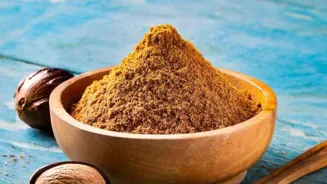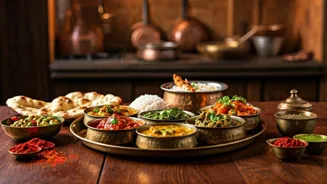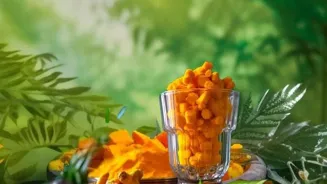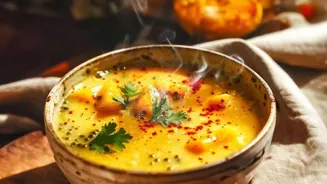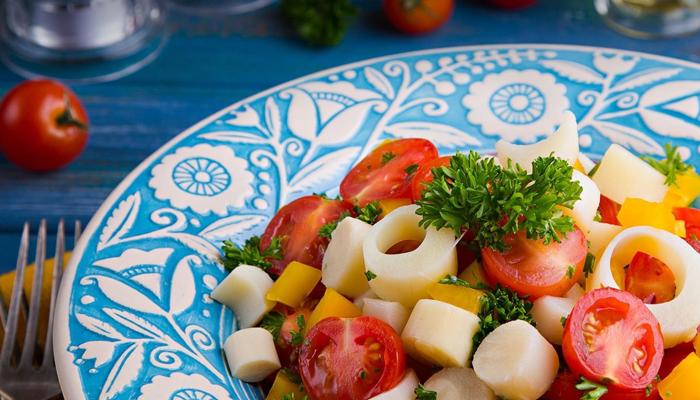Unlock the secrets of Indian cooking with the best produce! Elevate your dishes with expert tips. Read more for culinary magic
Namaste, food lovers! Indian cooking is renowned worldwide for its complex
flavours and aromatic spices. But the real secret to a delicious, home-style Indian meal lies not just in the masalas, but in the quality of the produce you use.
Choosing the right vegetables and fruits can elevate your dishes from good to absolutely unforgettable. This guide, tailored for the Indian kitchen, will help you navigate the market like a pro and select the best ingredients for your culinary creations.
Select firm, heavy, vibrant red tomatoes for Indian dishes
Tomatoes are the backbone of countless Indian curries, dals, and chutneys. When selecting tomatoes, look for ones that are firm, feel heavy for their size, and have a vibrant red colour. Avoid tomatoes with blemishes, bruises, or soft spots. The skin should be smooth and taut.
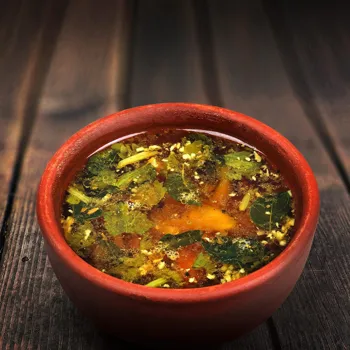
For a richer, sweeter flavour ideal for gravies, opt for desi tomatoes, which are usually smaller and have a deeper red hue. Roma tomatoes are also a good choice for sauces and pastes due to their fleshy texture and low seed content.
If you're making a fresh tomato chutney or raita, choose ripe, juicy tomatoes with a slightly tangy aroma. Always smell the tomato; a good tomato will have a fresh, earthy scent.
Remember, the riper the tomato, the sweeter and more flavourful it will be, but ensure it's not overripe to the point of being mushy.
Test tomato ripeness by gentle press; should yield slightly
A simple test is to gently press the tomato; it should yield slightly but not feel hollow.
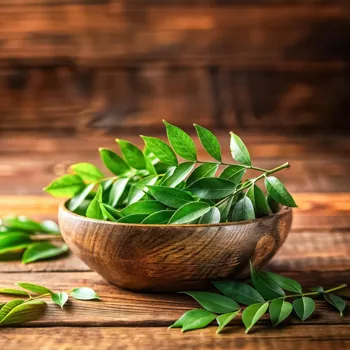
Choose firm, dry onions and plump, pungent garlic for Indian cooking
Onions and garlic form the aromatic base of almost every Indian dish. For onions, choose those that are firm, dry, and heavy for their size. Avoid onions that are sprouting or have soft spots, as these indicate spoilage. The skin should be papery and intact.
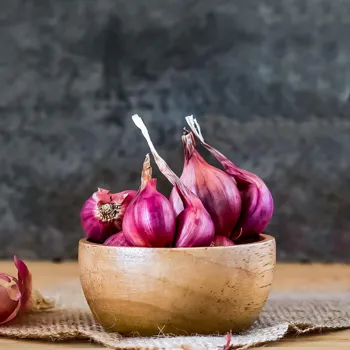
Red onions are excellent for salads and raitas due to their sharp flavour, while yellow onions are more versatile and can be used in curries and gravies. For garlic, select bulbs that are plump, firm, and have tight, unbroken skin.
Avoid garlic with green shoots emerging, as this indicates it's starting to age. Fresh garlic should have a strong, pungent aroma. If the cloves feel soft or the bulb feels light, it’s likely dried out and won't have as much flavour.
Remember, proper storage is key to keeping onions and garlic fresh. Store them in a cool, dry, well-ventilated place away from sunlight. Never store them in the refrigerator as this can cause them to spoil faster.
Choose firm, smooth-skinned potatoes without green spots; store in cool, dark place
Potatoes are a staple in Indian cuisine, used in everything from aloo gobi to samosas. When choosing potatoes, look for firm, smooth-skinned potatoes without any green spots or sprouts. Green spots indicate the presence of solanine, a toxic compound that can cause bitterness and is best avoided.
Avoid potatoes that are soft, wrinkled, or have blemishes. Smaller potatoes are generally better for boiling and roasting, while larger potatoes are ideal for mashing or making fries.
For dishes like aloo paratha, choose potatoes that are good for boiling and mashing, such as the desi variety, which tends to be less starchy. Remember to store potatoes in a cool, dark, and well-ventilated place to prevent them from sprouting or turning green.
Never wash potatoes before storing them, as this can promote moisture and lead to spoilage.
Check potato freshness by gentle squeeze; should feel firm
A good way to check a potato's freshness is to give it a gentle squeeze. It should feel firm, not soft or spongy.
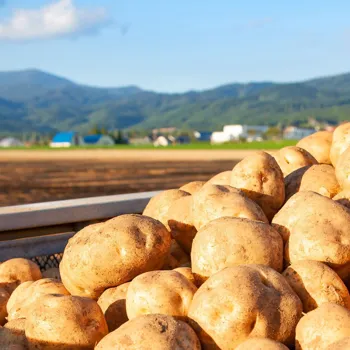
Leafy greens are nutritious, choose fresh vibrant leaves, wash thoroughly, and use promptly
Leafy greens like spinach (palak), fenugreek leaves (methi), and mustard greens (sarson) are nutritional powerhouses and add a wonderful depth of flavour to Indian dishes. When selecting leafy greens, look for vibrant, unwilted leaves with a fresh, crisp appearance.
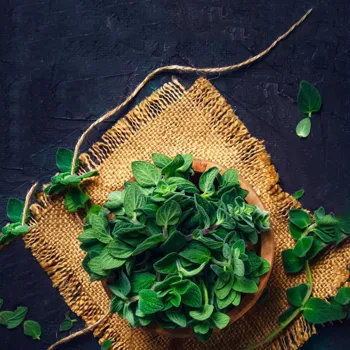
Avoid leaves that are yellowing, slimy, or have brown spots. Spinach should have a rich, dark green colour, while methi should have a strong, aromatic fragrance. Sarson should have firm, sturdy leaves. Before using leafy greens, wash them thoroughly to remove any dirt or grit.
Soak them in a bowl of water for a few minutes, then rinse them under running water. For delicate greens like spinach, gently pat them dry to avoid bruising. Remember to use leafy greens as soon as possible after purchasing them, as they tend to wilt quickly.
Store them in the refrigerator in a plastic bag or container lined with a paper towel to absorb excess moisture.
Spices are crucial in Indian cuisine; choose wisely for freshness and quality
While technically not produce, spices are essential to Indian cooking and deserve special attention. When buying spices, opt for whole spices whenever possible, as they retain their flavour and aroma longer than ground spices.
Look for spices that are brightly coloured and have a strong, pungent aroma. For example, cardamom should be green and plump, cloves should be dark brown and fragrant, and cinnamon sticks should be tightly curled and aromatic.
When buying ground spices, check the expiry date and choose brands that are known for their quality. To ensure the freshness of your spices, store them in airtight containers in a cool, dark, and dry place.
Avoid storing spices near heat sources or in direct sunlight, as this can cause them to lose their flavour. Toasting whole spices before grinding them can enhance their aroma and flavour.
Indian cooking tips: choose fresh, firm vegetables in season
Beyond the basics, Indian cooking utilizes a wide variety of other vegetables, each requiring its own selection criteria. For cauliflower, choose heads that are firm, compact, and white or creamy in colour. Avoid cauliflower with brown spots or a loose, spreading head.
For okra (bhindi), select pods that are young, tender, and bright green. They should snap easily when bent. Avoid okra that is tough, fibrous, or has brown spots. For eggplants (baingan), choose those that are firm, smooth, and heavy for their size. The skin should be shiny and free of blemishes.
For gourds like bottle gourd (lauki) and ridge gourd (turai), select those that are firm, smooth, and have a uniform colour. Avoid gourds that are soft, wrinkled, or have blemishes. Remember to always buy produce that is in season, as it will be fresher, more flavourful, and more affordable.
Choosing best produce elevates Indian dishes with practice
Choosing the best produce for Indian cooking is an art that improves with practice. By paying attention to these guidelines and using your senses – sight, smell, and touch – you can elevate your dishes to new heights of flavour and nutrition. Happy cooking!



